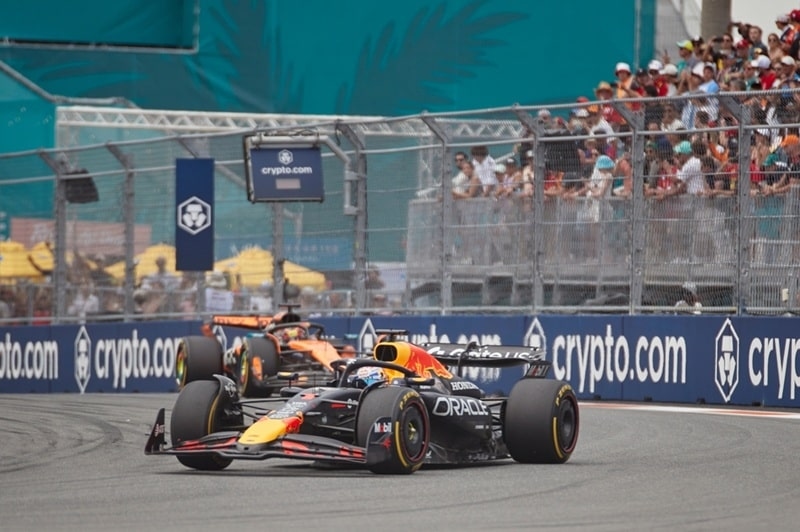From Karting To F1: The Path To Becoming A Formula 1 Driver

Numerous ambitious and talented individuals aspire to pursue a career in Formula 1, an exceptionally challenging and exhilarating venture. Positioned as the pinnacle of motorsport, Formula 1 seamlessly blends speed, precision, excitement, and cutting-edge technology. However, the journey to the summit is protracted, arduous, and fiercely competitive. This article delineates the steps one should undertake to realize the aspiration of becoming a professional Formula 1 driver.
Commencing with Go-Karting
For many accomplished and highly followed Formula 1 drivers, go-karting served as their initial foray into racing. Acquiring the fundamentals of racing and honing vital skills such as car control, racecraft, and strategy is facilitated through karting, a pursuit that is both accessible and reasonably priced. Noteworthy figures like Lewis Hamilton and Sebastian Vettel initiated their racing trajectories in go-karts. It is imperative to establish a robust foundation for future racing ambitions by actively participating in karting for an extended period.
Elevating Your Driving Skills and Techniques

The journey toward becoming a professional Formula 1 driver necessitates mastery of driving skills and techniques. By engaging in consistent practice and gaining experience in kart racing or utilizing simulators, one can refine essential skills such as braking, cornering, overtaking, and race strategy. These become even more important on race tracks such as the Las Vegas circuit. Furthermore, an augmentation of driving abilities is attainable through the study of professional races, attendance at workshops or racing seminars, or seeking guidance from a coach or mentor. Accelerating progress toward a career in Formula 1 is substantially achievable by enrolling in a reputable racing school.
These institutions offer advanced training programs, typically spanning 1-2 weeks of intensive courses aimed at honing racing skills. It is imperative to select a school endorsed by the Fdration Internationale de lAutomobile (FIA), the governing body of Formula 1. Completion of such a program culminates in the acquisition of a racing license, enabling participation in diverse racing events to showcase skills and attract potential sponsors.
Participating in Various Formula Racing Series
Before aiming for Formula 1, aspiring drivers should accumulate experience in lower-level formula racing series. This includes Formula Ford, Formula 3, and Formula 2. Succeeding in these series not only bolsters your racing portfolio but also provides valuable exposure to operating high-performance single-seat race vehicles. Notably, achieving commendable results in these series can capture the attention of Formula 1 teams and sponsors, thereby enhancing the likelihood of eventually reaching the pinnacle of motorsport. For career advancement and opportunities, cultivating a robust network within the racing industry is imperative.
Establishing connections with local racing teams, clubs, and fellow drivers can unlock doors to sponsorship prospects, mentorship, and valuable advice. Involvement with junior teams affiliated with Formula 1 teams, such as the Red Bull Junior Team, offers drivers invaluable exposure and an opportunity to glean insights from seasoned professionals in the field. Maintaining communication within the racing community facilitates awareness of job openings, tryout opportunities, and potential sponsorships.
Physically and Mentally Preparing for the F1 Challenge
Attaining a remarkably high level of physical and mental fitness is essential for Formula 1 drivers. Maintaining strength, endurance, and focus becomes crucial due to the elevated G forces and intense concentration involved. A rigorous workout regimen that incorporates both cardio and strength training is essential for optimal physical preparedness. Mental resilience required for success in Formula 1 can be developed through mental training methods such as visualization, meditation, and stress management techniques. There is no age limit for participating in Formula One, making it possible to enter the competition at any age, provided one meets the necessary qualifications. Kimi Rikknen, for example, retired from Formula 1 at the age of 42 in 2021, illustrating that individuals can continue competing in the sport even as they reach advanced ages.
Becoming an Assistant or Manager to an F1 Driver
Many Formula One drivers enlist the assistance of support personnel during races, with some opting for trainers to ensure their fitness, hydration, and overall health, while others rely on the guidance of their managers or agents. Managers play a pivotal role in the world of F1 racing, engaging in a highly specialized field that demands years of experience. Responsible for overseeing logistics, staff operations, and compliance with sporting regulations, managers ensure that the team meets the standards set by the FIA and the sporting code. Understanding the process of becoming an F1 driver is a crucial step in grasping the intricacies of the sport. Although many aspire to participate in the race, some fall short of this dream. Nevertheless, there is always hope for those with aspirations of entering the competitive world of F1 racing.
Costs Associated with Becoming an F1 Driver
Entering F1 racing comes with a substantial financial commitment, and only a select few can afford it. Some drivers receive support from sponsors to cover their registration fees. As of 2023, the basic registration fee per driver is $11,047, with an additional $2,230 per point earned in the previous season. Prominent figures like Lewis Hamilton and Max Verstappen incur significant fees to compete in the 2023 competition. The registration fees for the top 10 F1 drivers in 2023 are as follows:
- Max Verstappen: $1.023 million (Team: Red Bull Racing)
- Charles Leclerc: $698,000 (Team: Ferrari)
- Sergio Perez: $690,000 (Team: Red Bull Racing)
- George Russell: $624,000 (Team: Mercedes)
- Carlos Sainz: $559,000 (Team: Ferrari)
- Lewis Hamilton: $545,700 (Team: Mercedes)
- Lando Norris: $283,000 (Team: McLaren-Mercedes)
- Esteban Ocon: $216,000 (Team: Alpine-Renault)
- Fernando Alonso: $191,500 (Team: Aston Martin-Mercedes)
- Valtteri Bottas: $120,000 (Team: Alfa Romeo-Ferrari)
Conclusion
Achieving the status of a Formula 1 driver demands unwavering dedication, immense effort, and an insatiable passion for the sport. By following these guidelines, immersing oneself in the realm of motorsports, and continuously refining skills, aspiring individuals can set themselves on the right path to realizing their dream of competing in Formula 1.
This content was created by AI




